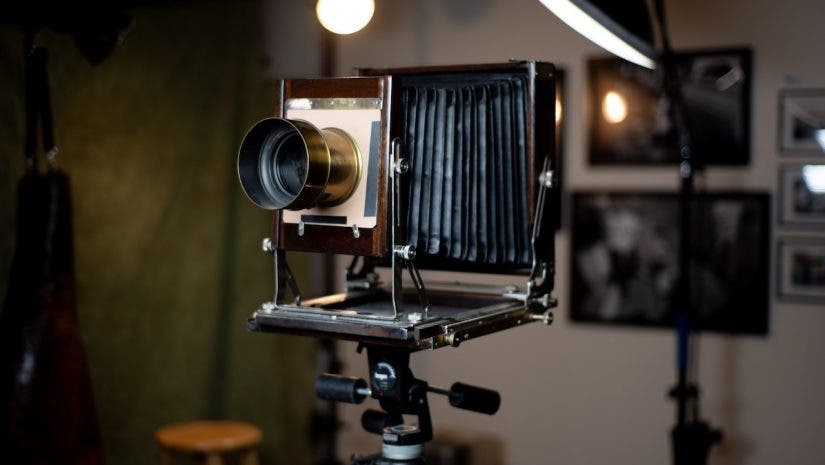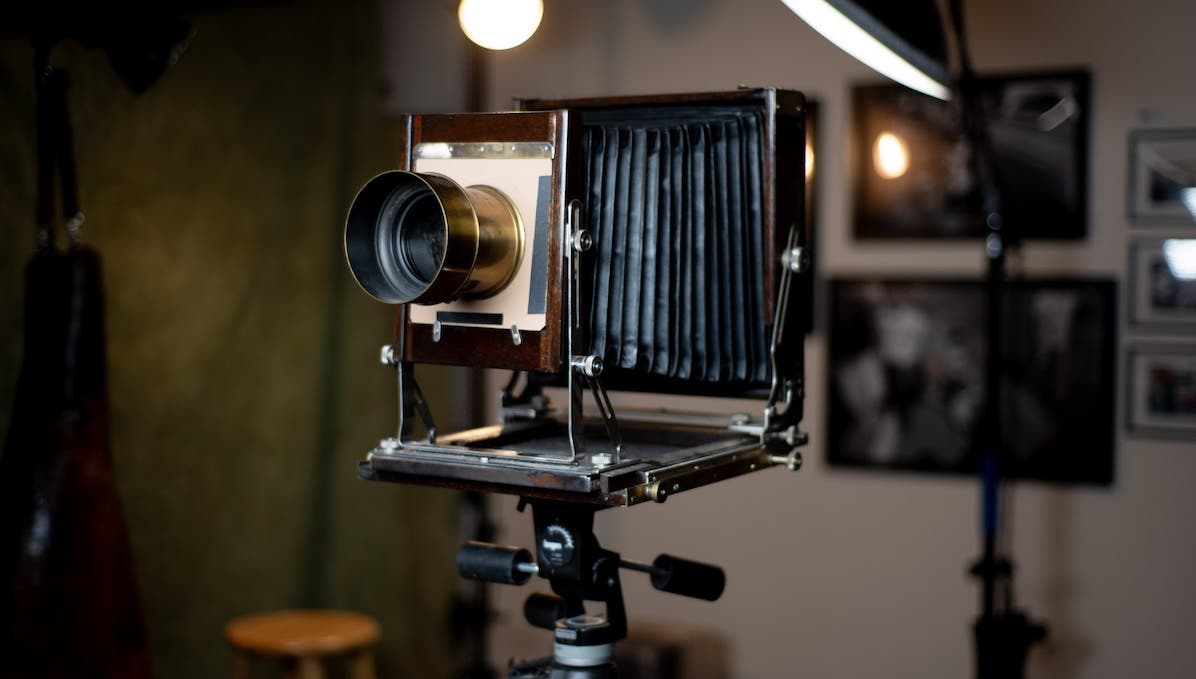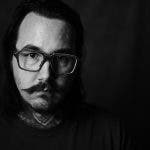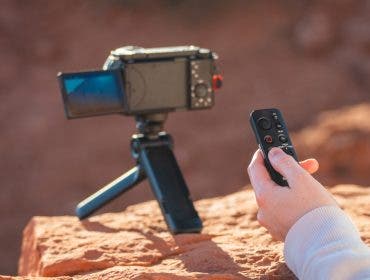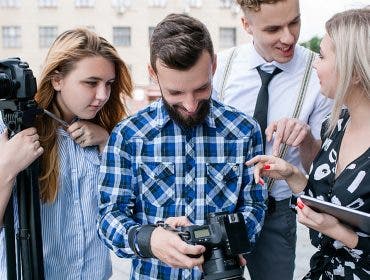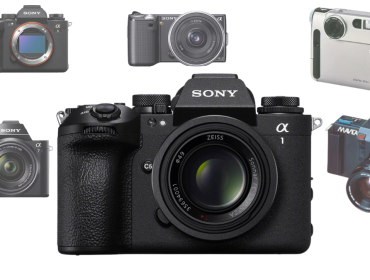Today, when everything is faster, smaller, and easier to erase, creating a tangible photograph is almost like an act of rebellion. We forget—some of us don’t even know what it’s like to physically make a photograph. That’s one of the big reasons I still shoot with a process that dates back to the 1800s. Beyond that, I continue to work with analog formats ranging from 35mm to large format. My name is Matthew Stella, and I run Silver and Cedar, a tintype portrait studio based in Phoenix, Arizona. My work bridges the gap between old-world craftsmanship and modern innovation, keeping the spirit of traditional photography alive.
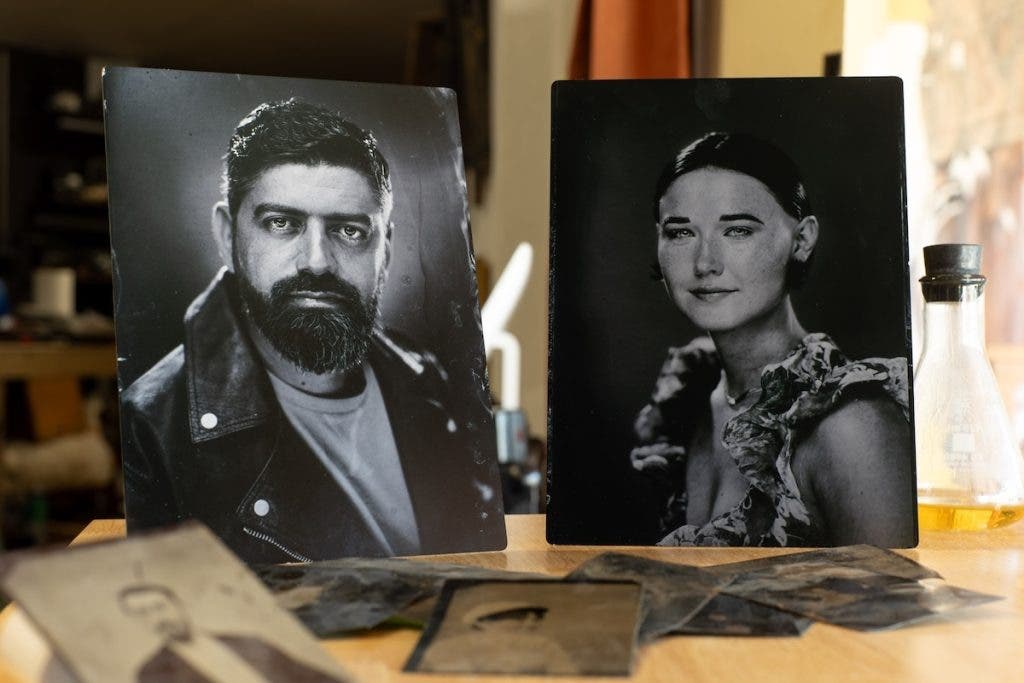
35mm to Digital
It all started with a Minolta SRT-101 and whatever drugstore film was cheapest. I was about 12 years old, walking the streets of Los Angeles until the sun went down. Long days, taking photos of anything and everything. To be honest, I had no idea what I was doing. I had no idea what worked and what didn’t until my mom took the film in to get it developed. As I slowly started figuring things out, I got introduced to the local LA music scene—a lot of punk rock and hardcore. These concerts were raw and gritty, especially when you were crammed into a tiny living room at a house party with barely any room to move.
That was around the time I got my first digital camera—a Canon Digital Rebel of some sort. I figured, since I was already immersed in that world, why not document it? Photographing bands live led to doing promo shots—classic “arms crossed; four people staggered” kind of setups. You know, with that nice isolating outdoor strobe look. That’s when I really discovered how much I loved photographing people.
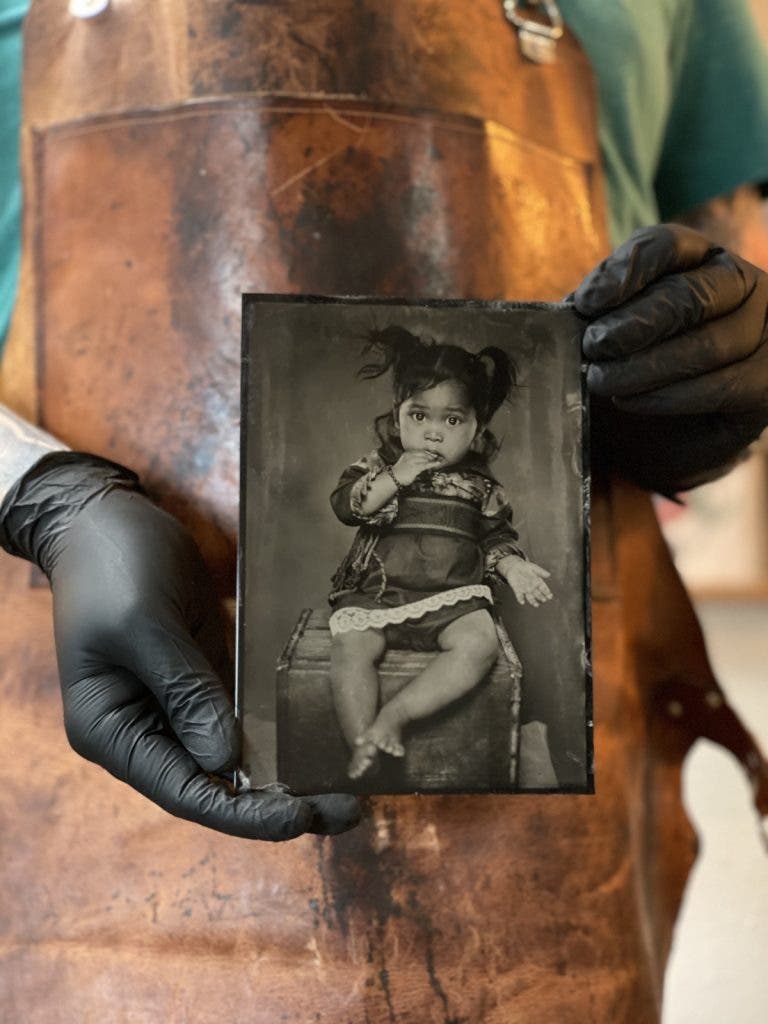
From Digital to Tintype
Over the years, that focus only grew—candid people in the streets, posed portraits, headshots. If it had a person in it, I wanted to photograph it. Then, in 2010, I saw my first modern-day tintype in person, and I was completely mind-blown. The power, the emotion, the chemical imperfections, the tones—everything about it was captivating.
A couple of years later, I was invited to create some kind of live art at a tattoo convention. I remembered seeing the tintype process and knew that was what I wanted to do. After acquiring all the gear, I had about a week to get ready. I shot every night leading up to the event. By the time the convention rolled around, I kind of knew what I was doing. Of course, I had no idea that weekend would build the foundation for my entire career.
Today, my portrait work is primarily tintypes, with maybe 10% being digital. I usually turn to digital when clients want color photos or when I can’t bring my darkroom out into the field. Most people think of tintypes as old western portraits—cowboys and deserts (especially here in Arizona)—but my clients are everyone. People are beginning to really appreciate the experience of holding a physical photograph, knowing it can one day be passed down through generations.
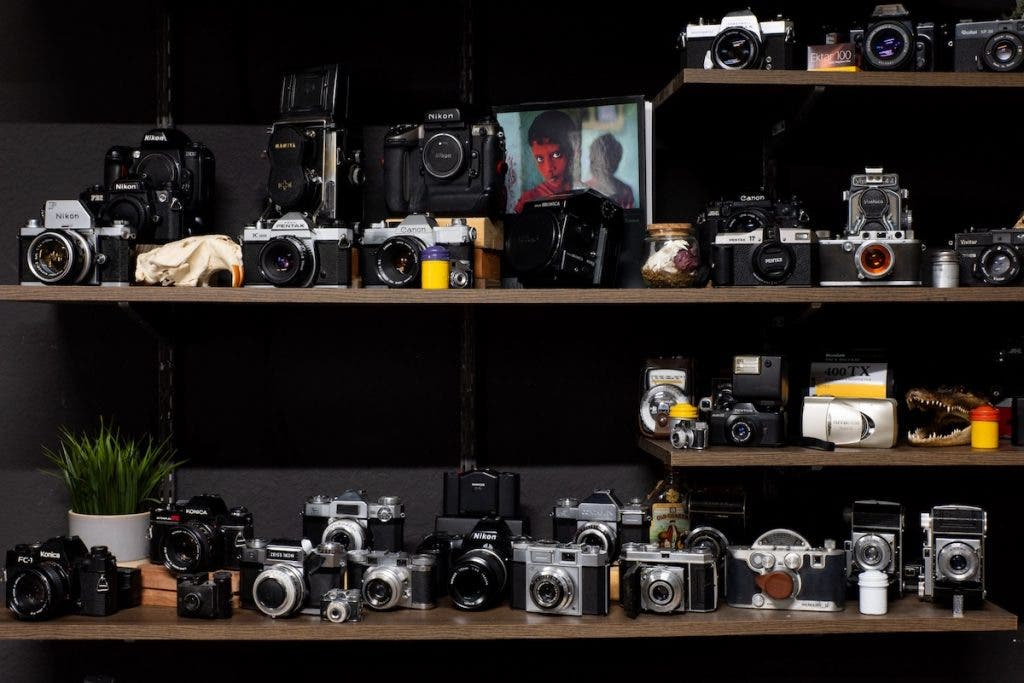
History at Work
Imagine yourself walking into a small camera museum— and that’s the feeling you get walking into my studio. I’ve collected over 150 analog film cameras—everything from sub-miniatures to big 8×10 cameras. My daily drivers are my 8×10 Deardorff V8 from around 1923, paired with a brass 300mm f/4 Darlot Petzval lens dating back to ~1860.
Shooting tintypes means working with an ISO around 0.5, no light meter, and a minimum of 2,500 watts of strobe power. Things can get a little tricky, and I constantly have to think on my toes.
The hardest part of the whole process is balancing modern lighting with 19th-century gear. For every shoot, I’m typically running a Godox AD1200 or AD2400 at full power as my key light, with 2 to 4 Godox AD600s, depending on the setup. Since my lens has no shutter or aperture blades and no sync port, everything is timed and hand-fired using a Godox XPro trigger. The lens is always wide open at f/4, which, with that focal length and coverage, is closer to f/2.8 35mm equivalent with a razor-thin focal plane about the size of an eyelash.
And what does the final product look like?
With tintypes, it’s truly a one-and-done experience. My clients are usually more nervous than you’d expect—because we only get one shot to get it right. Everything has to be done in-camera, and so much thought goes into each tintype that I do everything I can to make sure we nail it the first time. And honestly, nine out of ten times, we do.
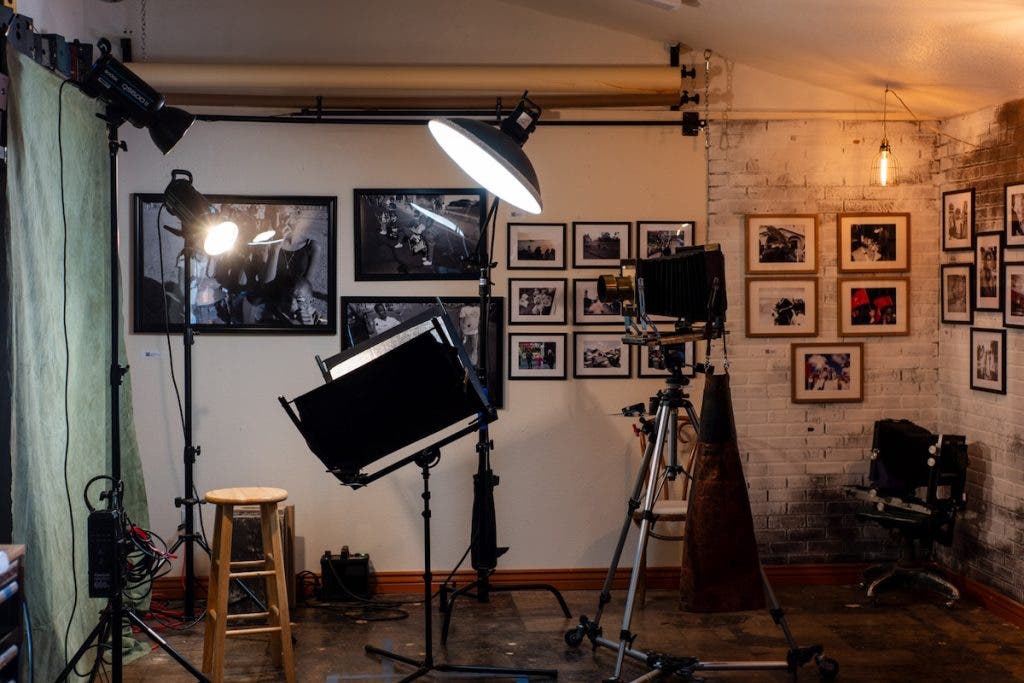
Duplicating the Image and the Feel
Since there’s only one original, tangible photo, clients often want a way to share the experience with family and friends. That’s when I discovered Printique’s metal prints—and now I’m obsessed. My clients love the feeling of holding that original metal plate, and Printique’s metal prints capture the look and feel of a tintype beautifully.
Because I can only go as big as 8×10 in my studio, Printique gives me the ability to scale up—11×14, 16×20, or even bigger—so the image can make a real statement on a wall.
I can’t say this enough: if you haven’t printed your work yet, do it. Everything changes when you’re physically holding a piece of art you created.
